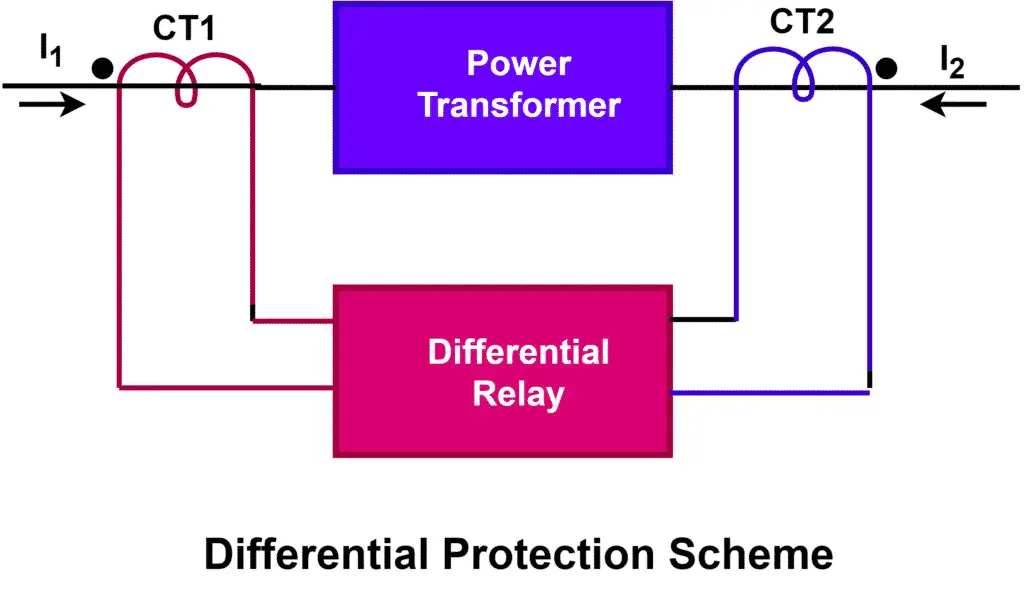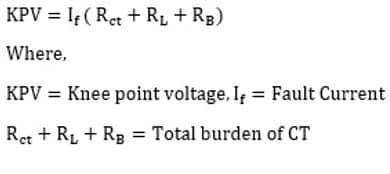In this post, we will discuss the PS class CT specifications & its application. Without the use of PS class CT, differential protection can not be reliably made. We will also discuss what is differential protection & how PS( Protection Special) class CT is important for differential protection.
The differential protection also called zone protection or unit protection. It is used for sensing the fault in a piece of particular equipment or a particular section. We use differential protection scheme for the protection of large rating alternators, transformers, and HT motors.
The differential protection system measures the incoming and outgoing current and calculates the difference of current. If the difference of the current is zero, it means the equipment is healthy and, so there is no fault inside the equipment. Any difference in the incoming and outgoing current clearly shows that there is fault inside the equipment. Under this condition the the differential relay trips the upstream breaker to isolate the faulty section.
The main criterion of reliable operation of the differential relay is that it must trip only in the case when there is a fault in particular equipment, section, or zone. And, the differential protection relay should not trip in the case of through fault condition.
Application of PS Class CT
The differential protection scheme is as given below.

Two current transformers CT1 and CT2 are mounted at the incoming and outgoing sides of the equipment to measure the current. Both the current transformers are wired in a differential protection relay. The differential protection relay measures the incoming & outgoing current and calculates the difference of the current. The relay output a trip command to breaker if found difference in the current.
For feeder protection, protection class CTs 5P10, 5P20, 10P10 are used. The protection class CT can not be used in place of the PS class current transformer.
Why is PS Class CT suitable for Differential Protection?
Let us understand Why protection class CT can not be used for differential protection?
If the 5P20 protection class CTs are used for differential protection at the incoming and outgoing sides of the transformer. In case of fault, If 20 times of rated current of CT flows through it, the current transformer will not saturate because the accuracy limit factor of the current transformer is 20. The CT may function well above the 20 times current, however, it is difficult to predict at what current the CT will get saturated.
The protection class CT installed at the incoming side of the zone protection let’s say saturate at 21 times current and the CT installed at the outgoing side of the zone protection saturate at 22 times current of the rated current of CT. In a faulty condition, the difference of current will be sensed once the relay senses the saturation of one of the CTs. Thus, the differential protection can not be reliably ensured with the use of protection class CTs.
The PS class CT is special protection class CT. Both the PS class CTs used for differential protection have identical saturation characteristics and their knee point voltage is the same. The designer takes the data like lead resistance, relay burden, and system fault level from the user before the design of PS class CT. In through fault condition, both the CTs operate at the same operating points of the BH curve and thus differential relay remains inoperative under through fault condition.
The knee point voltage (KPV) of the current transformer depends on.
- System fault level
- Total burden of current transformer
The knee point voltage of the protection class CT is;

PS Class CT Specification
| Ratio | 200/1 |
| Primary Terminal | P1-P2 |
| Secondary Terminal | 3S1-3S2 |
| Burden (VA) | Specify |
| Class | PS |
| KPV(min) Voltage | 600 |
| iexc(max) at Vk/2 | 50 mA |
| Rct @ 75o C | < 6 Ohm |
Read Next: